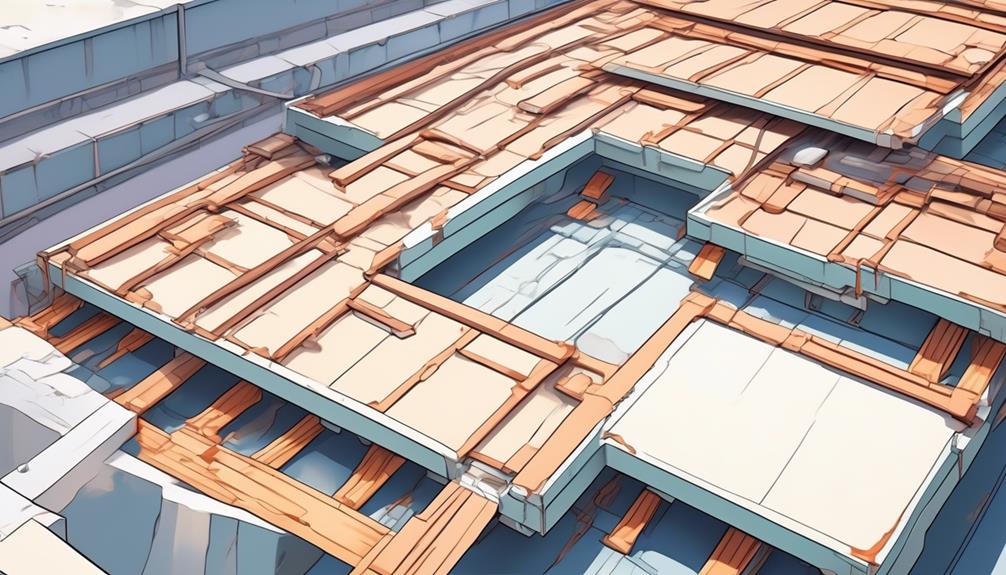Roof sleepers are essential for providing support and stability to any roofing system. They play a crucial role in ensuring that your roof stands the test of time.
With different types available, roof sleepers can be installed to meet specific needs and bring numerous benefits. Understanding the purpose of roof sleepers and how they are installed is key to maintaining a durable and reliable roof.
Whether you're building a new roof or renovating an existing one, roof sleepers are a fundamental component that should not be overlooked.
Purpose of Roof Sleepers

Roof sleepers raise the platform for a new roof, allowing proper ventilation and preventing moisture damage. They elevate the roof above the existing surface, enabling air circulation and ventilation underneath. This helps prevent moisture buildup, mold growth, and structural damage.
Roof sleepers also distribute the weight of the roof evenly and act as a barrier against water damage from leaks or standing water. They're crucial for the longevity and durability of the roofing system.
Types of Roof Sleepers
To understand the different types of roof sleepers, it's important to explore the various options available for elevating and supporting your roofing system.
Roof sleepers can be made from different materials, each with its own advantages and considerations.
Wood sleepers are often used in residential construction because they're cost-effective and easy to work with. They provide a stable base for the roof and can be installed quickly. However, wood sleepers may require regular maintenance to prevent rotting or warping.
Concrete sleepers are durable and resistant to moisture, making them a popular choice for commercial and industrial buildings. They can withstand heavy loads and provide excellent support for the roof. However, concrete sleepers can be more expensive and may require specialized equipment for installation.
Metal sleepers, such as steel or aluminum, are lightweight and strong. They offer excellent resistance to weather and are often used in areas prone to high winds or harsh climates. However, metal sleepers can be more expensive than other options and may require professional installation.
Installation of Roof Sleepers

When installing roof sleepers, follow these key steps for a successful installation:
- Prepare the surface: Clean the roof surface to remove debris and ensure proper adhesion.
- Install the sleepers: Place the sleepers on the roof in the desired pattern and spacing. Use a level to align them and secure with screws or nails.
- Provide proper ventilation: Install a breathable membrane or insulation board between the sleepers to allow for air circulation and prevent moisture buildup.
Benefits of Roof Sleepers
After installing roof sleepers, you can enjoy the following benefits:
| Benefits of Roof Sleepers | Explanation |
|---|---|
| Improved Air Circulation | Roof sleepers create a gap between the roof and the decking, allowing better air circulation, reducing moisture buildup, and promoting a healthier environment. |
| Enhanced Insulation | Roof sleepers provide an additional layer of insulation, regulating temperature and reducing energy consumption, leading to lower heating and cooling costs. |
| Noise Reduction | The space created by roof sleepers acts as a buffer, reducing the transmission of sound from the outside, resulting in a quieter interior environment. |
| Protection Against Moisture | Roof sleepers create a barrier between the roof and the decking, preventing direct contact and minimizing the chances of water damage and rot. |
| Increased Lifespan of Roofing Materials | By reducing exposure to harsh weather conditions, roof sleepers can extend the lifespan of roofing materials, saving you money on repairs and replacements. |
